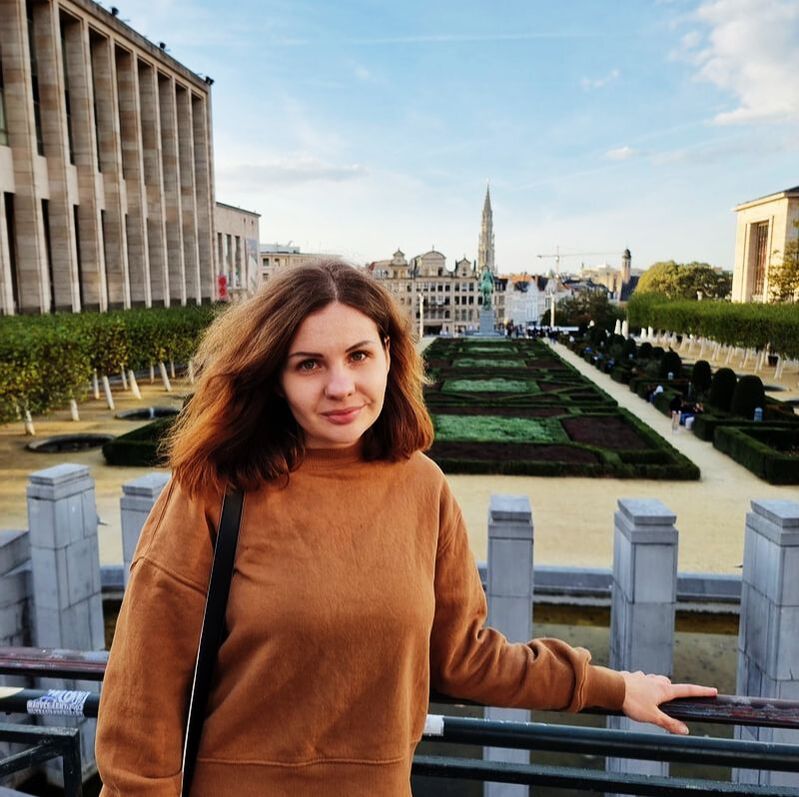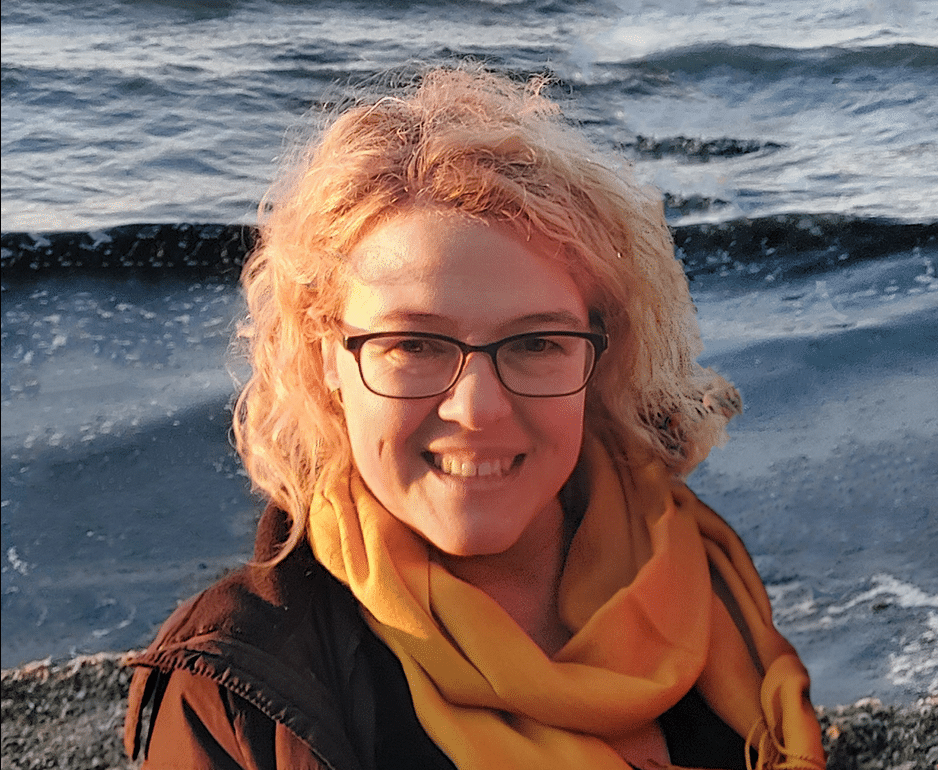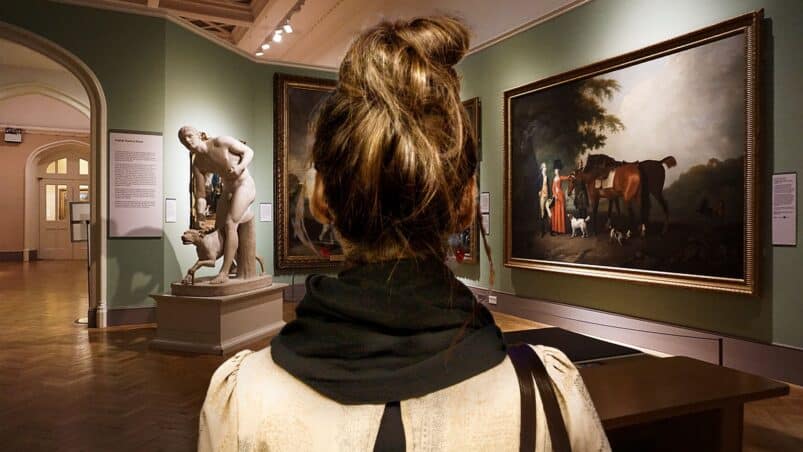As Women’s History Month kicked off this March, we asked two women from different generations to tell us about their experiences as women professionals in the cultural heritage sector. They notice that women often make up a decent part of the workforce in the sector, but lack representation in top positions. “But I never felt that I was an imposter, just because I’m a woman.”
What are the facts? Multiple pieces of research have shown that women are less often hired or handed top positions, and the cultural sector isn’t any different. “Research has shown that women are underrepresented in leadership positions in the cultural sector”, says Tanja Golub, a Ukrainian archaeology, heritage and art history student at Bamberg University in Germany. She refers to a report by the German Cultural Council in 2019: “Although women make up around 51% of the workforce in the cultural sector, they hold only 31% of leadership positions.”

At Golub’s university, there is a similar situation: “If we take a look at the level of professors, we see that the number of women decreases as the level of qualification rises”, the European Heritage Youth Ambassador notes. “Interestingly, their webpage with data on women in the humanities faculty has not been updated since 2017. From my point of view, the situation right now is almost the same. Most professors and chairholders are men, and women are represented mostly as science assistants or technicians.”
Nonetheless, she sees a changing trend based on the numbers: “There are six women’s museums among the 7.000 full-time or voluntary museums in Germany, and more than 30% of museums are currently run by female directors. That’s positive to see.”
Better Representation
On the other side of Europe, in Romania, Alina Chiciudean sees that there are a lot of women actively involved and working in the sector, even in senior positions. “Although I don’t have the exact statistics to back it up right now, I know from experience that they’re well represented in official institutions and especially in civil society organisations”, reckons the co-founder and president of the ARCHÉ Association and a well-known face in the Romanian heritage sector.

“I don’t think there is an imbalance in the gender representation between ‘hard heritage’ (conservation etc.) or ‘soft heritage’, like interpretation and storytelling activities, which you sometimes see in other countries.” She continues: “For example, this year we’ll organize two workshops with ARCHÉ where we use castles as living labs. The workshops on archaeology are run by women and the landscape heritage workshop is as well. Yes, there are a couple of male assistants involved, but to be honest, when you go to a cultural event you expect to be surrounded by women.”
Few Female Decision Makers
But why is the gender representation in Romania different from for example Germany? “Perhaps one of the reasons is Romania’s communist past”, Chiciudean says. “While the communist era had lots of negative aspects, one of the positive parts is that equal opportunities for men and women were promoted. Women were presented as an important part of building the communist state, so they had to get an education. Both my parents were for example researchers and received equal pay. That’s why I never felt that I was an imposter, just because I’m a woman.”
However, while the women are often ‘getting their hands dirty at a grassroots level’, Chiciudean notices an imbalance in the decision-making part of the sector. “The Ministry of Culture is run by men, many members of parliament are men, and policies are also often made by men. It would be more equal to have a stronger feminine presence at the decision level, and a stronger masculine presence at the grassroots cultural organisations and activities.”
Closing the Gap
But closing up the gender imbalance in top positions in the cultural sector, and at a decision-makers level is easier said than done. Luckily Golub is full of ideas: “Think of a legislative framework: a target for the number of women in leadership positions in cultural institutions, and gender-neutral recruitment processes should be implemented.” She reckons that closing the wage gap would also go a long way.
“And supporting a healthy work-life balance would also do. This means providing benefits such as parental leave, childcare support, and flexible work arrangements. It can help support work-life balance for both women and men in the cultural sector. That would also include offering part-time or remote work more often. It could help attract and retain women who may have children or other commitments that make full-time working challenging”, Golub says.
You want to hear fresh ideas? Really give young people a chance.
Alina Chiciudean
Chiciudean ends with a piece of advice, especially for the younger generation of women trying to make a career in the heritage sector: “It might sound counter-intuitive because society often portrays that you matter most as a young, beautiful woman. But as you get older you will start feeling a lot more confident about what you do, also on a professional level. You will know your strengths and weaknesses. For me, ageing meant getting wiser and better.”
She also encourages more experienced professionals to turn their attention towards the younger generation more often. “If you want to hear fresh ideas or change things up: give young people a chance. And really listen to them and their ideas.”


Eeuer Artikel über den fortlaufenden Kampf der Frauen für Gleichberechtigung im Kulturerbesektor ist äußerst informativ und inspirierend. Er zeigt, wie wichtig es ist, die Barrieren für Frauen in dieser Branche zu durchbrechen. Eure Berichterstattung über die Erfolge und Herausforderungen, mit denen Frauen konfrontiert sind, ist bemerkenswert. Vielen Dank, dass ihr diese wichtige Diskussion vorantreibt und die Geschichten von Frauen im Kulturerbesektor sichtbar macht. Eure Arbeit ist von unschätzbarem Wert!